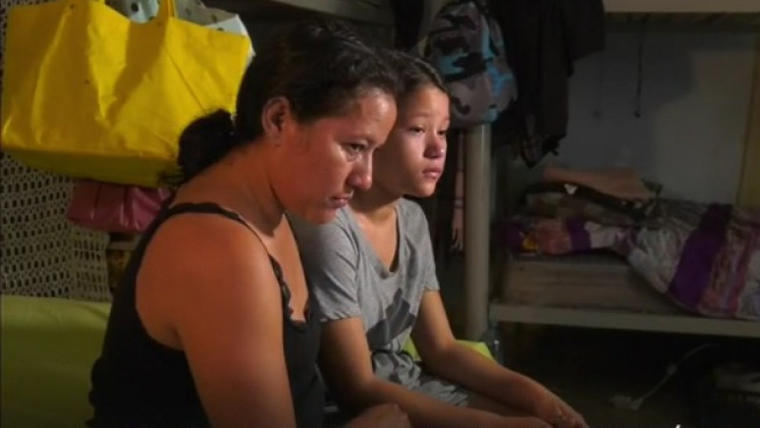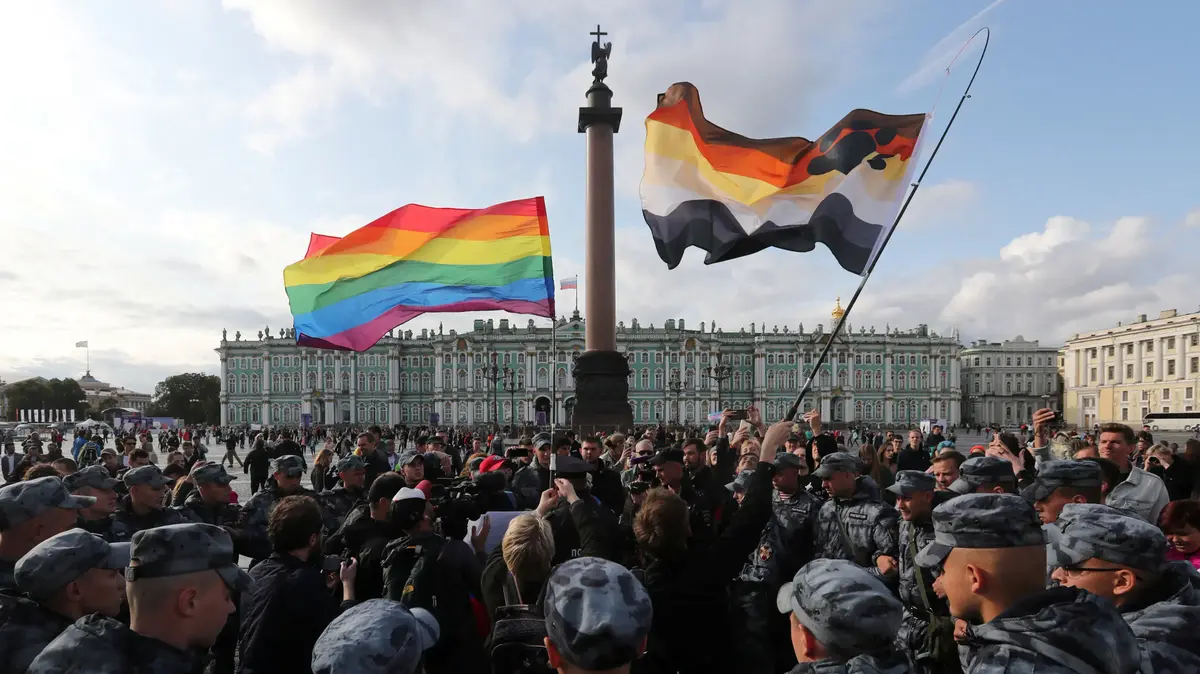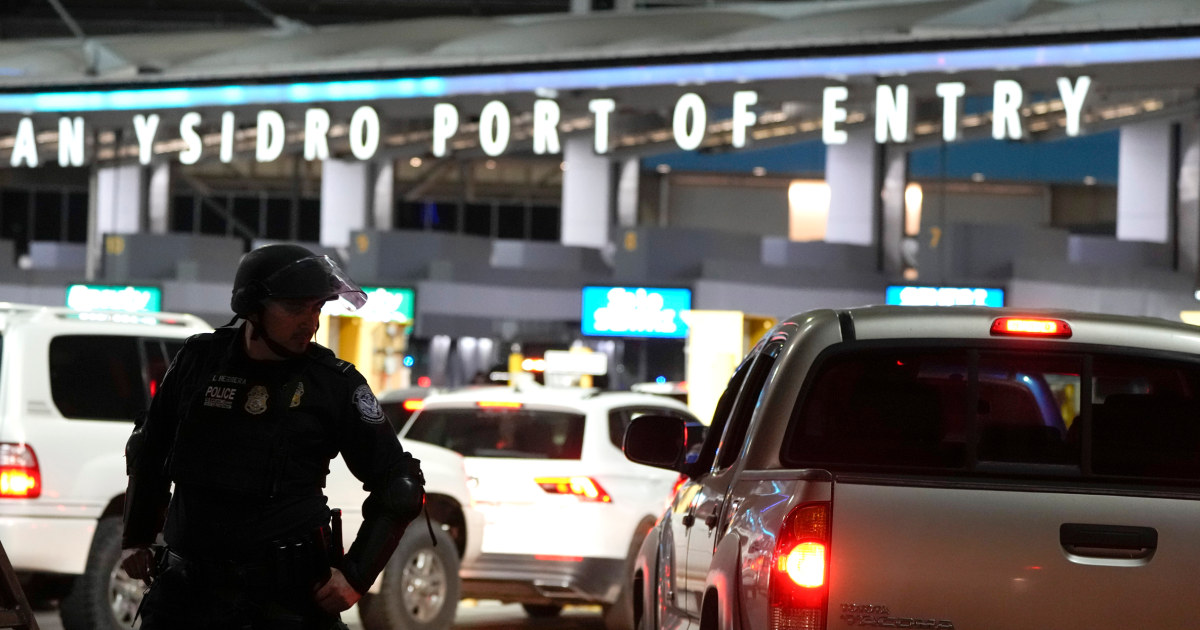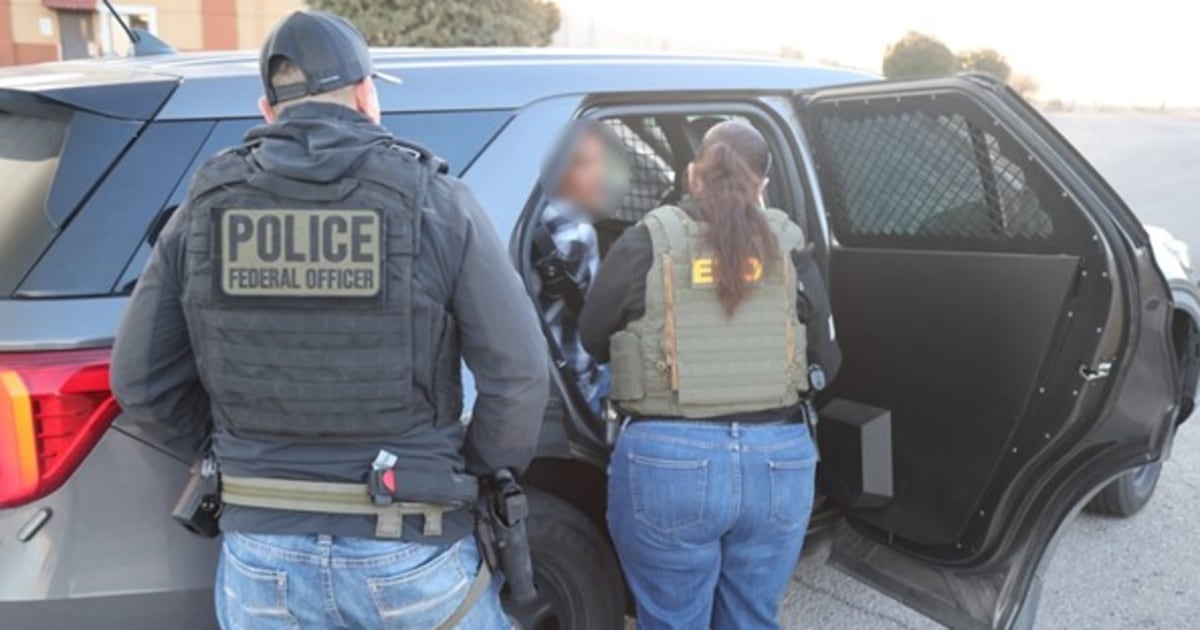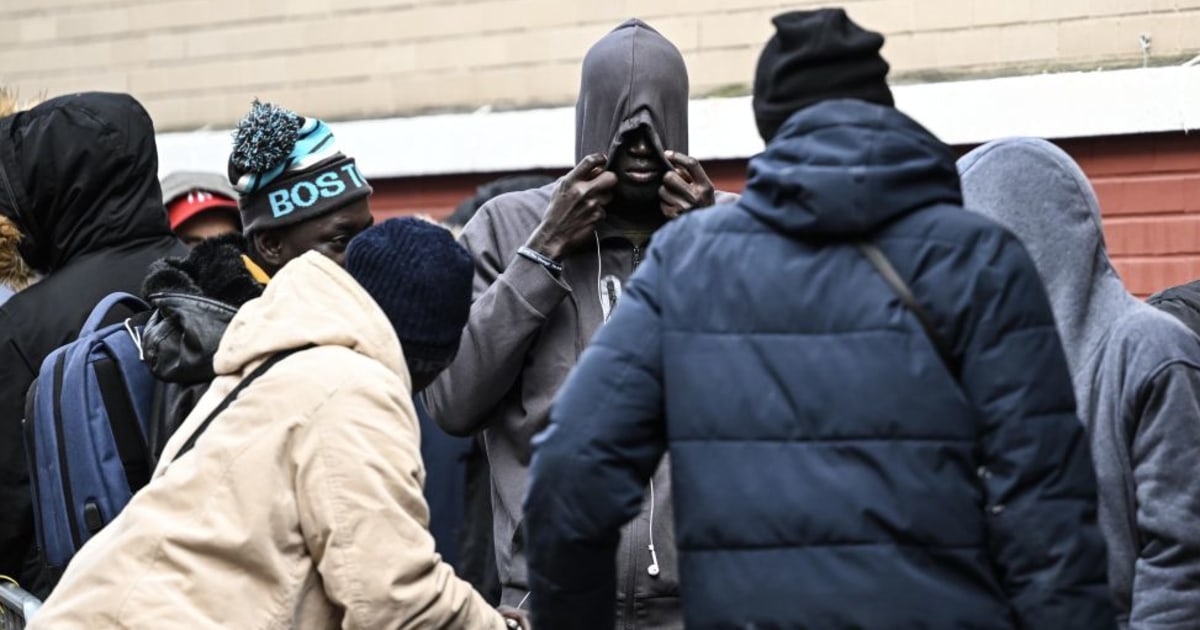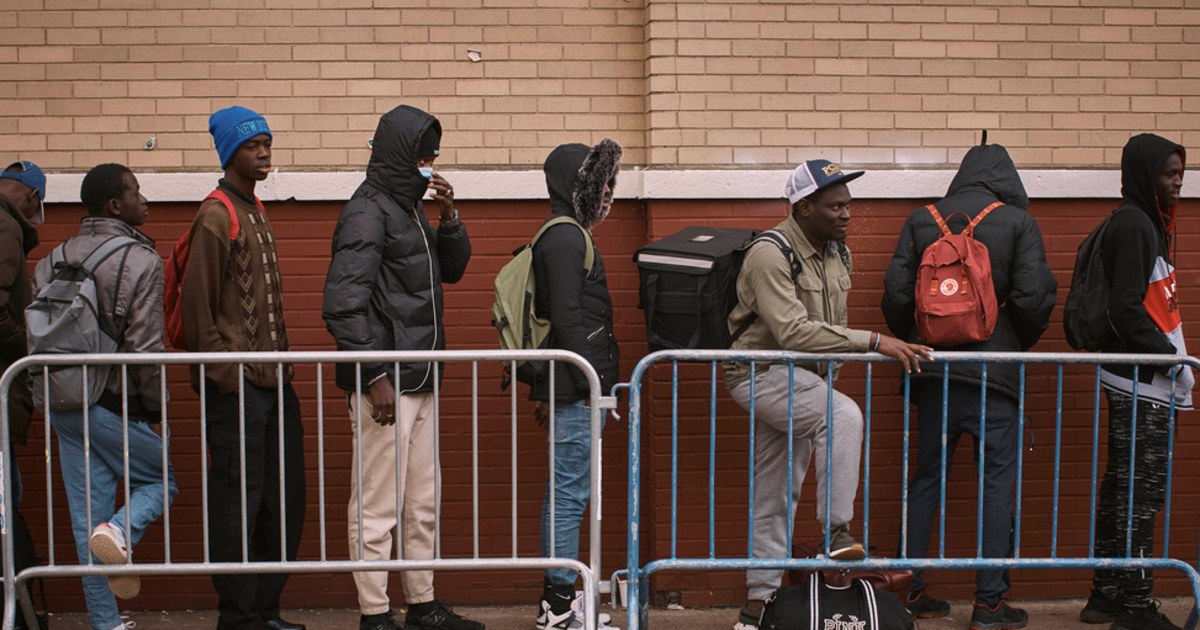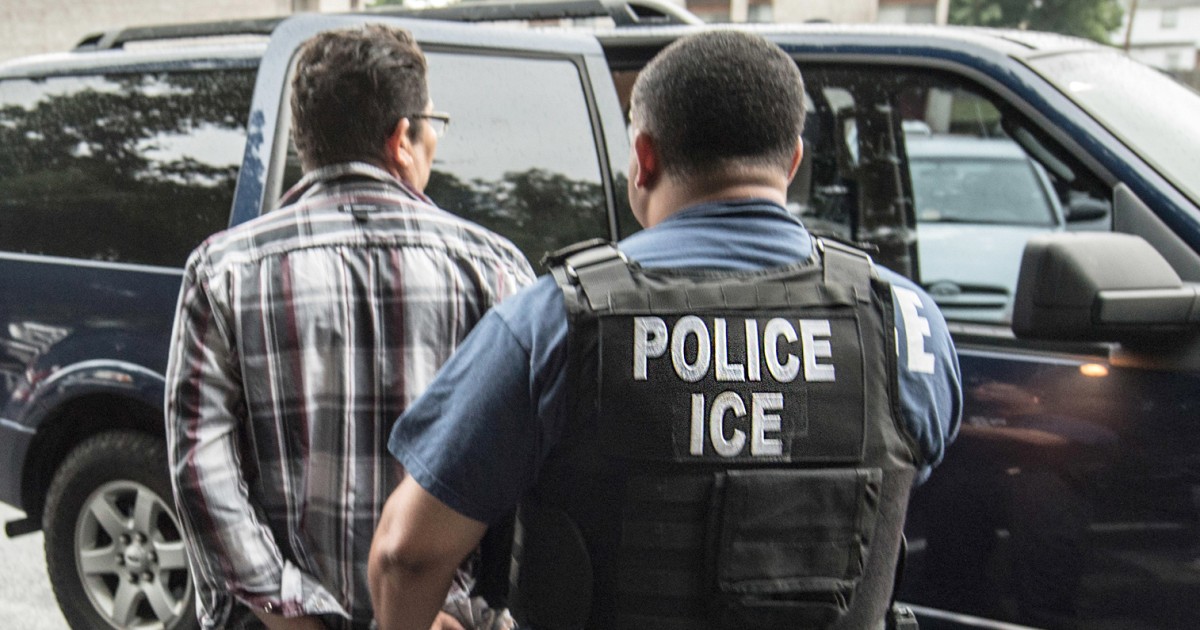“It is an inhuman experience.
They abuse people, violate your rights, mistreat you physically and psychologically (...) it is like taking a bottle and putting it in a drawer.
That's how they do with those people there.
When people go out they have psychological problems.
There are people who try to commit suicide.
They treat you very badly ... they throw you in a cell where there is urine, sometimes there is no water, it is dirty, there are people who drink water from the toilets.
Those places are hell on earth ”.
This is how a Honduran immigrant, whom we will call Luis to protect his identity, describes the year he was detained in the custody of the Immigration Service (ICE) in jails in New Jersey and New York.
He was released in early February
after going on a hunger strike for more than a month with other undocumented immigrants.
[The Lower House approves the plan to protect Dreamers, 'Tepesianos' and agricultural workers]
Luis, 30, originally from Santa Cruz de Yojoa, in the department of Cortés, Honduras, arrived without papers in the United States in 2006. He has two children, aged three and eight, and has been working in marine construction since 2012. He has a Asylum proceedings pending, but a domestic violence incident landed him in prison in September 2019. When he was released six months later, ICE agents were waiting to take him to the Essex County Correctional Facility in Newark, New Jersey.
“I believed in the immigration system for a year, but I saw that they were trying to deport me yes or yes.
So I decided to make a drastic decision, "he told Noticias Telemundo.
That decision came on December 24, when Luis and his companions stopped eating, in protest of their confinement and the risk they faced of becoming ill from COVID-19.
Thousands have been released
Like Luis, dozens of immigrants joined hunger strikes that began in December at three New Jersey detention centers: Bergen, Essex and Hudson jails.
It was a coordinated act of rebellion, with the support of various pro-immigrant organizations to pressure the authorities for his release.
Many experienced the worst of the pandemic in prison.
Immigrants and activists demonstrated in Brooklyn, New York, on Saturday, March 13, 2021, to demand the release of all the undocumented who are in ICE jails.Erik McGregor / Getty Images
Protests and the threat of the coronavirus have been key to the liberation of immigrants in the last year.
The current number of undocumented people in the custody of the Immigration Service is the lowest in recent years, according to federal data.
As of March 15, ICE had about 10,000 people held in 124 prisons across the country.
In 2019, for example, the daily average of immigrants detained in ICE jails reached 50,000, of which 60% were arrested by the Border Patrol and the rest by immigration agents in the interior of the country.
And although the number of detained immigrants decreased,
the risk of contracting COVID-19 inside the jail remains real:
currently, the Immigration Service has in its custody 475 people infected with the virus, some are isolated and others remain low. monitoring.
[ICE does not have a clear plan to vaccinate the thousands of detained immigrants fighting deportation]
Luis says that in the first days of the protest, he and his companions were transferred to a quarantine zone with other people and he feared they would be infected.
"They took us there to get sick, because of the corona they can give us the necessary medicines (to those who are not eating)," he said.
Danielle Bennett, a spokeswoman for ICE, defended herself against the accusations, and told Noticias Telemundo that the Detention and Deportation Operations (ERO) unit
“guarantees that detainees in ICE custody reside in safe, protected and humane environments and in adequate confinement conditions ”.
Migrants are thrown out of a moving van pursued by police
March 19, 202101: 36
In early January, still without eating, Luis was transferred to the Batavia detention center, upstate New York.
“They did it to scare me (...) they strategically got me out of there.
At that time there were 10 people on hunger strike in that unit.
When they transferred me, seven people were afraid and stopped the strike, "he says.
In Batavia he maintained the strike.
“I barely drank water, My lips were cut, my skin was peeling, I was falling apart.
The sugar was below normal, I began to have problems with the kidneys, the muscles began to have cramps ”.
["We will not end family detention," says ICE, "we will not close detention centers"]
Luis explains that his goal was to be allowed to fight his asylum case in freedom.
“I need to be outside.
I have family that I must help.
I am the only support.
My children are not eating well, they miss me a lot ”.
On February 8, after almost six weeks without eating, he was released.
"Tears came to my eyes because I had suffered a lot for 35 days and finally they had understood that I was willing to die there, for my family," he said from his home in New Brunswick, New Jersey.
Different strategies to achieve freedom
During the COVID-19 pandemic, thousands of undocumented immigrants were released from prison after a California judge ordered ICE to consider releasing all detained immigrants who are at increased risk of complications from COVID-19.
The court case, known as Fraihat, has been used since April 2020 by immigrants to demand their freedom.
To be precise, as of March 9, ICE had released 3,647 people by court order since the pandemic began.
"We couldn't breathe": mother and daughter cross Mexico in a truck and tell of their ordeal
March 18, 202101: 45
One of the people who used the Fraihat case is Bryan Vergara, a 30-year-old Chilean immigrant, who has lived in New York since 2016.
ICE arrested him in September of last year as he left a meeting with his parole officer,
after having served time for a fight he had on Long Island in 2018.
Vergara led the hunger strike at the Hudson Jail in Kearny, New Jersey, where he was detained for nearly five months.
He affirms that in that prison they do not have the adequate conditions to attend a medical emergency.
“I saw colleagues with epilepsy suffering a seizure, they fell to the ground, their heads were burst open, there was blood everywhere, and how does jail work?
putting handcuffs on their feet and hands and leaving them on the ground to convulse ”.
[More than 500 migrant children spend in Border Patrol custody triple the time legally allowed]
On the accusations,
Noticias Telemundo sought comment from the administrative authorities of the Hudson and Essex prisons, but they did not respond.
Bennett, the ICE spokeswoman, avoided addressing specific allegations.
But, he assured that all detained immigrants have access to medical personnel and emergency care 24 hours a day and that the agency invests more than 315 million dollars a year in health services.
"The health, safety and well-being of those in our care continue to be a top priority and concern for the agency," he said.
On February 4, 2021, a friend of Bryan Vergara took this photo of him in New York, when he was reunited with his partner, after spending almost six months in an ICE jail.
Vergara says that in his section there were almost fifty immigrants.
Realizing “the injustices that were being committed”, he decided to organize his companions.
“They think that the people who are detained there are the worst criminals (...) when I saw that all the people were losing their cases, they were denying bail, the judges were denying them everything, I spoke with them and told them that things they couldn't go on like this ”.
With the support of various organizations in favor of immigrant rights, Vergara and 24 others began their hunger strike on December 28.
They left her two days later, after jail administrators promised to bring in ICE officials to hear her complaints, according to her account.
But the promise was not kept, so they resumed the strike on January 4.
"When we returned there were more ... like 60 people,"
says Vergara.
[Two immigrants drown in the Rio Grande. A witness claims that the Border Patrol saw it but did not intervene]
“They started taking the names of all the comrades who were on hunger strike, they threatened us, saying that they were going to deport us faster or that they were going to move us to another state.
Some colleagues got out, out of fear.
They took all our belongings: books, food, the radio.
And we were put in punishment cells, which they call medical care cells, without water, without blankets, with dirty toilets, it was cold.
It was psychological torture.
They kept us locked up for 23 and a half hours a day.
One week I was on a hunger strike, I decided to end because ICE was already moving people to other states.
I didn't want my colleagues to think that because of me they were going to separate them from their families, ”he says.
With the help of a doctor provided by the Freedom for Immigrants organization, Vergara mounted her case to seek freedom based on the Fraihart sentence.
But he also had an important ally by his side: Democratic Representative Alexandria Ocasio-Cortes, who sent a letter requesting his release after Vergara's partner asked for his help.
The representative from New York, Alenadria Ocasio-Cortez, told Noticias Telemundo that "there should be no private detention centers" for immigrants in the United States.
Scott Applewhite / AP
“I did the application, but Alexandria Ocasio really let me go. She was the one who put pressure on them to let me go
,
”he
says.
Through her spokeswoman, Ocasio-Cortes explained to Noticias Telemundo that since she arrived in Congress in 2019, her office has sent 38 letters of support in immigration cases, although not all of the people were detained.
In addition, the representative has carried out other support efforts in more than 400 migratory cases, she explained.
Shackles and trauma
Bryan Vergara is now waiting for his asylum case to be resolved.
He wears a shackle on his ankle and returned to work as a construction worker.
Another person who wears an ankle shackle is Efraín Rodríguez González, an undocumented Colombian who was detained with Vergara in the Hudson jail.
Rodríguez was arrested by ICE in February 2020 in Queens, New York, nearly five years after he arrived in the United States on a tourist visa.
He fled Colombia with his wife.
“We were victims of the ELN (National Liberation Army), I was kidnapped and Maryori (his wife) paid 50 million pesos, we were extorted.
We arrived with nothing and we never knew how to make the asylum documents, ”he told Noticias Telemundo.
He spent almost a year in prison, something that contrasts with the average time that immigrants arrested by ICE spent in prison before the pandemic: 54 and a half days.
Bryan Vergara, with the megaphone, participated in a protest calling for the release of migrants in Manhattan on February 15, 2021. Vergara, originally from Chile, was in an ICE jail for almost six months.
Lev Radin / Reuters
He was in a cell with a Salvadoran immigrant, who was deported in June, he recalls.
He also says that they were held in the cell for 23 and a half hours each day, with 30 minutes to exercise, bathe and call the family.
“The treatment was terrible
, it was traumatic.
My heart breaks to think about what happens there, ”he
says.
Rodríguez participated in the hunger strike and managed to leave on February 19.
He explains that he was diagnosed with post-traumatic stress disorder and the onset of bipolarity and has been on medication for more than 10 months.
While in prison, Rodríguez applied for asylum, but his case was rejected by a judge in September.
Now, he is waiting for the appeal of his case to be resolved, unable to work and paying $ 1,000 rent for a room in an apartment in Queens that the couple shares with five people.
[Migrant families will not be detained for more than 72 hours, says ICE]
Rodríguez's defender, Johanna Zacarias, believes that the liberation of immigrants in the first months of the year was not the product of hunger strikes, but of various legal tactics.
“What I did see was a clear correlation between hunger strikes and ICE retaliation, through solitary confinement and transfer to other prisons.
The strikes were successful in raising awareness and shedding light on what these people are experiencing in prison, ”said Zacarias, a lawyer for the Legal Aid Society of New York.
More than 3,000 children remain detained in adult migrant centers
March 9, 202101: 16
Noticias Telemundo spoke with other immigrants who went on hunger strike in New Jersey jails, most of them Central Americans.
Almost all of them had a legal problem for minor offenses that landed them in prison.
After serving their sentences, they were arrested by ICE.
Federal data indicates that during fiscal year 2019, four out of ten crimes committed by detained immigrants were traffic violations or offenses against immigration laws.
The accounts of what the people with whom we spoke lived in prison are similar: 30-minute breaks every 24 hours, sometimes during the early morning hours, when they could not call their relatives, mistreatment by prison officials, ridicule, threats of deportation, prolonged isolation in small cells, some sick, others depressed and anxious.
Outside, their relatives try to help them, working little and spending their savings, when there is one, to pay for lawyers.
Leaving prison is left with the trauma and stigma of wearing an ankle shackle.
“One comes out with self-esteem on the floor, due to the discrimination that one receives in prison.
And it comes out to receive more discrimination, when people see that device in the foot.
People turn away from you.
Also, the shackle is uncomfortable and annoying, ”says Juan Hernández, a Salvadoran immigrant who was held in the Hudson detention center.
Juan Hernández, in the kitchen of the restaurant where he works, in Lynbrook, Long Island.
Born in Rosario de Mora, El Salvador, he came to the United States in 2005. Juan Hernández
Hernández has lived in New York for 16 years and was released on February 19, after spending several days on a hunger strike.
He was placed in an intensive supervision program (ISAP) for which the Immigration Service pays millions of dollars to The Geo Group, a private company that runs prisons, and which also tracks thousands of immigrants as they advance their immigration processes. deportation.
The program monitors people through electronic shackles, home visits, and curfews in which they cannot leave their home.
Hernández requested asylum and was denied.
Now he waits for a judge to decide his appeal.
“I want to stay, I have a daughter here.
My country has many problems.
I grew up in a civil war and migrated because we were in a great fight against gangs, ”he says.
[Republicans reject House of Representatives plan that protects Dreamers, 'Tepesians' and farm workers]
“There are moments, at night, that I remember the people who stayed inside.
One would like to help them, ”Hernández says of the detained immigrants.
That help sometimes comes through organizations like Freedom for Immigrants, Movimiento Cosecha or Abolish ICE NY-NJ, a coalition of activists that advocates for the release of all undocumented immigrants and the closure of detention centers.
In most cases, these groups are the only thread of hope connecting detainees to the outside world.
The pressure they exert outside is vital.
A Guatemalan immigrant wears an electrical ankle monitor after being released by ICE in Houston, Texas.
Immigrants complain about the stigma these devices represent in their personal lives.
Eric Gay / AP
“We pressure the officers and we make protests outside the detention centers.
We also make calls every week ... there are people who call politicians and (ICE) agents to ask them to let these people out ”, explains Tania Mattos, coordinator in the northeast of the country of Freedom for Immigrants.
In early December, these organizations participated in a protest outside the Bergen County Jail in Hackensack, New Jersey, which ended in a clash with police and the arrest of at least nine people.
[Defenders of immigrants protest against the reopening of detention centers]
For this Saturday they plan two protests in New York, to demand the release of those who are still held. They will meet in Manhattan and Buffalo at 1:00 pm
, Freedom for Immigrants reported.
For them, the Biden administration's promises on immigration alone are not enough.
“No administration made any big changes without pressure from the community.
How far Biden will go depends on how much the community fights for those changes, ”Mattos said.
"Now is when you have to fight more," said Efraín González.

